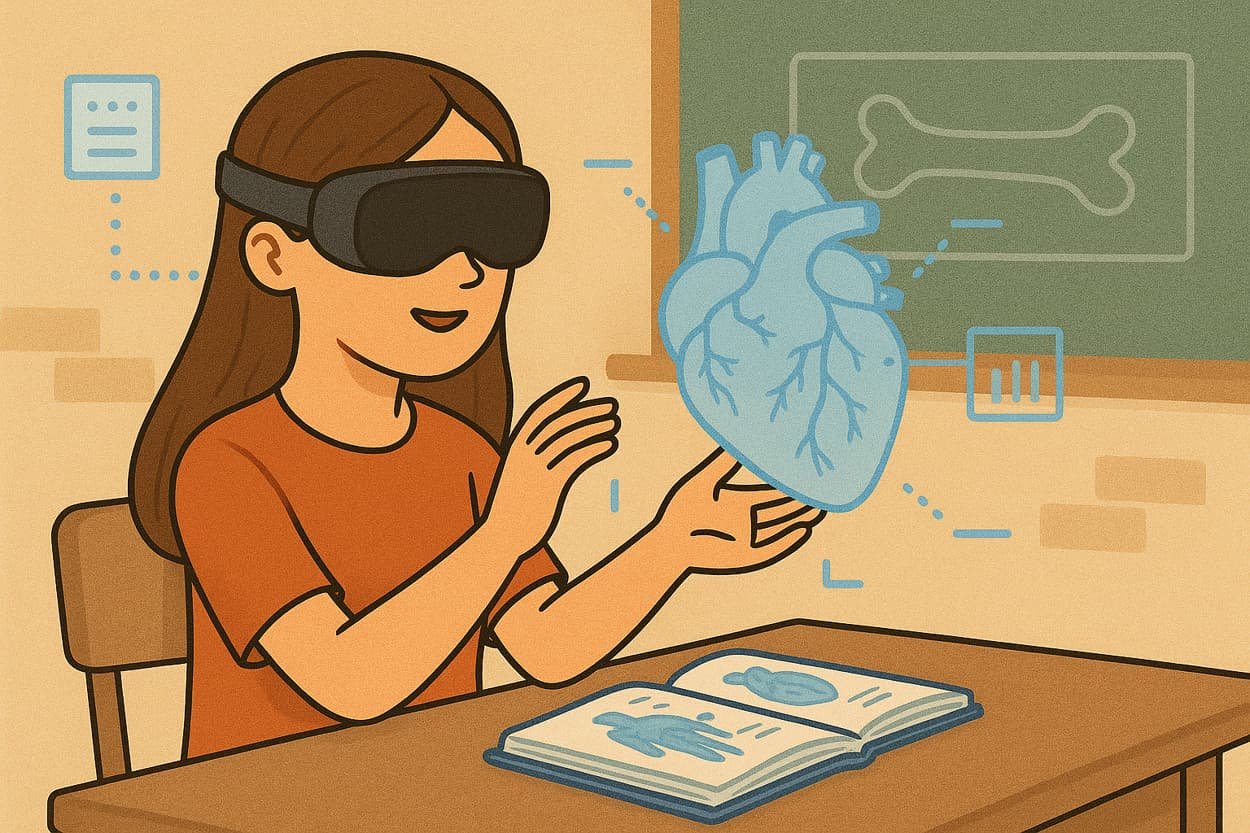Traditional learning methods often struggle to keep students engaged, especially in hands-on subjects like science, engineering, and arts. Many students learn best through practical experiences, yet remote learning and textbook-based approaches limit real-world interaction.
Augmented Reality (AR) is revolutionizing hands-on learning by creating interactive digital experiences that simulate real-world scenarios. By merging the physical and digital worlds, AR makes education more engaging, accessible, and impactful.
How AR Enhances Hands-On Learning
AR provides students with a deeper understanding of complex topics by allowing them to interact with digital objects in real-world environments. Key benefits include:
- Immersive Learning: AR enables students to manipulate 3D models, conduct virtual experiments, and practice real-life skills in a safe, controlled environment.
- Increased Retention: Hands-on activities help students retain information longer compared to passive learning methods.
- Immediate Feedback: AR applications provide instant feedback, allowing students to correct mistakes and refine their skills in real time.
- Accessible Learning: AR reduces the need for expensive lab equipment by simulating hands-on experiences digitally.
- Multi-Sensory Engagement: By combining visual, auditory, and tactile interactions, AR appeals to different learning styles.
With these benefits, AR is transforming hands-on education across various subjects.
Real-World Applications of AR in Practical Education
AR is already being used to enhance hands-on learning experiences in diverse fields:
- Medical Training: AR allows medical students to practice surgical procedures on virtual patients before performing real operations.
- Engineering and Mechanics: AR helps students visualize mechanical systems, assemble virtual components, and troubleshoot problems.
- Science Labs: Chemistry and biology students can conduct virtual experiments without the risks associated with real chemicals.
- Art and Design: AR tools let students sketch, sculpt, and design in 3D space, providing real-time feedback on their work.
- Technical and Trade Skills: Electricians, plumbers, and automotive technicians use AR to practice repairs and installations in a risk-free environment.
These applications demonstrate how AR is making hands-on learning more interactive and effective.
Challenges of Integrating AR into Hands-On Learning
Despite its advantages, there are challenges to implementing AR in education:
- Equipment and Cost: High-end AR hardware can be expensive, but mobile-based AR solutions offer a more affordable alternative.
- Technical Learning Curve: Some educators may struggle to integrate AR into their teaching methods without proper training.
- Student Distractions: Overuse of AR elements can lead to students focusing more on the technology rather than the educational content.
- Limited Content Availability: While AR tools exist, not all subjects have well-developed AR learning materials.
By addressing these challenges, educators can maximize the impact of AR on hands-on learning experiences.
The Future of AR in Hands-On Education
As AR technology advances, its role in hands-on learning is expected to expand. Future developments include:
- Haptic Feedback Integration: AR devices that simulate touch sensations to enhance realism in hands-on experiences.
- AI-Powered Adaptive Learning: Intelligent AR systems that personalize lessons based on individual student performance.
- Wearable AR for Immersive Training: Smart glasses and AR headsets that provide step-by-step instructions in real-world tasks.
- Collaborative AR Learning: Multi-student AR environments that allow for group projects and peer learning.
These innovations will further enhance AR’s effectiveness in practical education.
Recommended Resources
Explore these resources to learn more about AR in hands-on education:
- Edutopia – AR and Hands-On Learning
- eLearning Industry – AR in Practical Education
- Forbes – How AR Enhances Hands-On Training
- We Are Teachers – Best AR Tools for Hands-On Learning
These articles provide valuable insights into the growing role of AR in hands-on education.
Frequently Asked Questions
Common questions about AR in hands-on learning:
- Is AR useful for all subjects? Yes, while it’s most effective in STEM and technical fields, AR is also beneficial for arts, history, and language learning.
- Do students need expensive AR devices? No, many AR applications run on standard smartphones and tablets, making them widely accessible.
- How can teachers integrate AR into hands-on lessons? Start with simple AR apps for visualizing complex concepts, then gradually incorporate interactive experiences.
- Does AR replace traditional hands-on learning? No, AR is meant to supplement and enhance practical learning, not replace real-world experiences.
